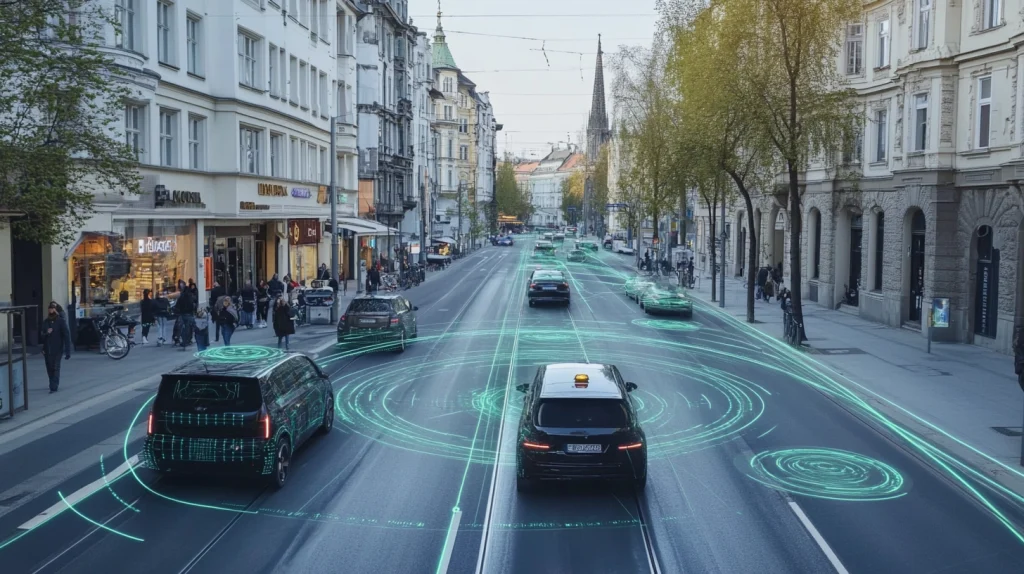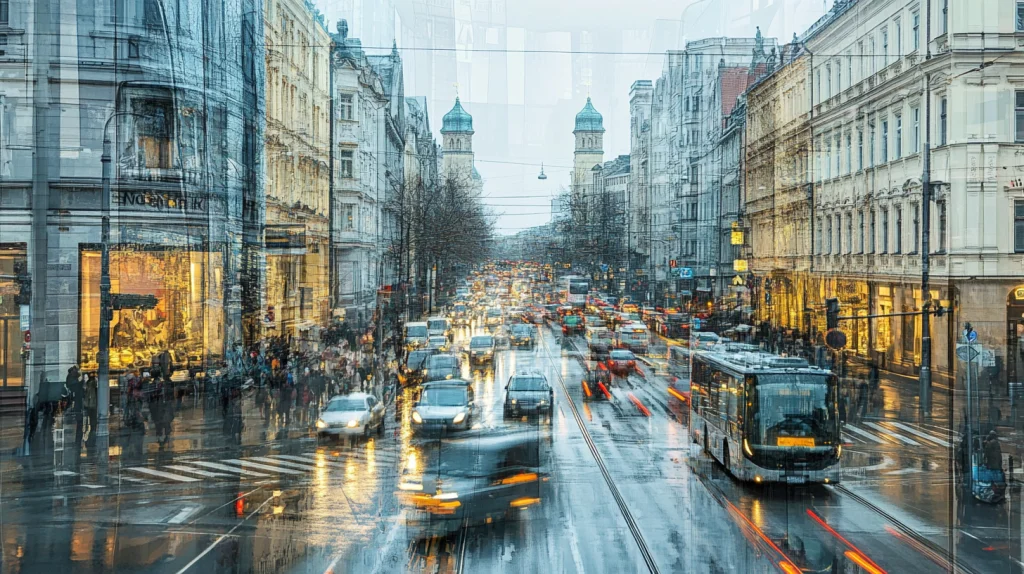The dream of past futurists — a city without traffic jams and accidents — has become the subject of real research in 2024. Thanks to V2X (Vehicle-to-Everything) technologies, artificial intelligence and autonomous transport, the concept of intersections without traffic lights is getting closer to reality.
What is an autonomous intersection?
Traditional traffic lights operate on strict timings. They do not know how many cars are approaching, where a pedestrian is, and they cannot take into account the situation in real time. Modern technologies offer an alternative — smart intersections, in which traffic is regulated not by signals, but by the interaction of cars with each other and with the city infrastructure.
- 💡 V2X (Vehicle-to-Everything) is a system of communication between a car and other cars (V2V), the road (V2I), pedestrians (V2P) and the network (V2N).
How does it work?
- Cameras and sensors record the movement of vehicles, cyclists, and pedestrians.
- AI algorithms calculate optimal trajectories and speeds for each participant.
- Cars receive signals via 5G and Wi-Fi to synchronize their movement.
- There is no need to stop the flow — cars pass each other in real time.

Real-life examples
- MIT and Toyota have created a prototype intersection where autonomous cars pass without stopping.
- China is implementing V2X infrastructure in several cities, combining it with cameras and AI.
- Austria and the Netherlands are testing intersections with flexible control that responds to the flow.

What about safety?
The main advantage: the human factor is excluded. In V2X systems:
- Cars brake in advance;
- Pedestrians and cyclists are visible even before the intersection;
- The speed is calculated for each participant.
Also, such systems are self-learning – the more data, the more accurate the behavior.
When will cities start abandoning traffic lights?
A complete transition is a matter of the future. On the way:
- the need for mass implementation of autonomous vehicles;
- standardization of V2X protocols;
- infrastructure investments.
But the hybrid stage is already underway: adaptive traffic lights, smart zones and machine learning in transport centers.

A city without traffic lights is no longer a fantasy, but a new transport paradigm, where every movement is optimized, and every intersection is a smart system based on AI. In the next 10-15 years, such technologies may become the norm for megacities, where speed, safety and sustainability of traffic are important.

Leave a Reply